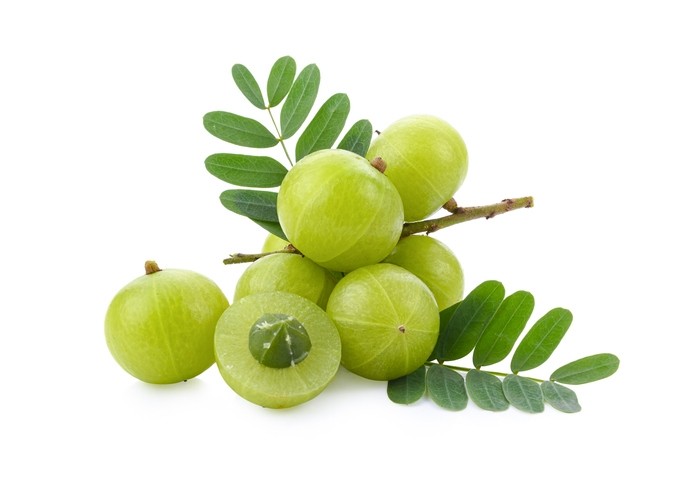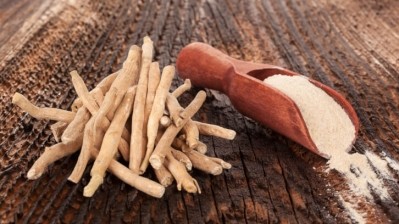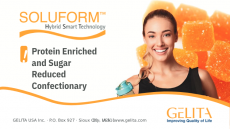Sabinsa study elucidates blood sugar benefits of amla ingredient

The firm's Indian gooseberry ingredient called 'Saberry' is standardised with beta glucogallin, a Gallotannin compound, which holds the key to health benefits obtained from Indian gooseberry.
In the study, Saberry was shown to significantly improve the key parameters of blood sugar levels, both fasted and post prandial, and lipid levels (LDL, VLDL and total cholesterol) in subjects with hyperglycemia and BMI ranging from 27-35.
Blood sugar surging
Type 2 diabetes mellitus (T2DM) is a metabolic disease characterized by hyperglycemia, caused mainly by insulin resistance or inadequate insulin production.As per the International Diabetes Federation Atlas guideline report, 463 million people in the age group of 20–79 years were diagnosed with diabetes in 2019, which is predicted to increase to 700 million by 2045.
T2DM with dyslipidemia is one of the most critical risk factors for cardiovascular diseases (CVD) in diabetic patients. Elevated triglycerides (TG), excess of small, very-low-density lipoprotein (VLDL), remnant lipoproteins, postprandial hyperlipidemia, and reduced high-density lipoprotein (HDL) are the characteristic features of diabetic dyslipidemia, which is more atherogenic than general dyslipidemia.
Patients with diabetic dyslipidemia are at an increased risk of developing microvascular complications like diabetic nephropathy, neuropathy, and retinopathy due to inadequate glycemic control. Coronary artery disease, peripheral arterial disease, and stroke are the macrovascular complications associated with these patients.
Amla as a traditional medicine
Amla in traditional medicine considered a rejuvenator and immunomodulator with its effect on digestion, cough, asthma, heart diseases, hair growth, eye health, and overall body and mind. Its application in the management of diabetes, dyslipidemia, obesity, numerous types of cancer, liver disorders, arthritis, gingivitis, and wound healing have been reported in various scientific studies. Amla fruit contains numerous phytoconstituents, including polyphenols like tannins, gallic acid, ellagic acid, amino acids, vitamins, minerals, fixed oils, and flavonoids. Polyphenols, tannins, and flavonoids play a key role in most of the bioactivities of E. officinalis.
Although the E. officinalis plant is reported for its antidiabetic activity, the biological properties of extracts may differ based on the extraction methods and the biomarkers standardized in the final product. We have earlier reported the antidiabetic activity of EOE, evaluated by in vitro methods.
In the present study, researchers from Sabinsa Corporation, evaluated the effect of EOE in reducing hyperglycemia and dyslipidemia in comparison with metformin, the first-line treatment for newly diagnosed T2DM patients.
The study
The study design used three arms with a total 124 subjects for comparing two dosages of Saberry supplementation (1g and 2g) with standard treatment group (metformin 500mg).
In addition, all the study participants agreed to do physical activity for a minimum of 30 minutes, five days a week.
Both the dosages of Saberry showed improvement in glucose and lipid metabolism in a dose dependent manner with 2g showing 21.8% lowering of fasting blood sugar levels compared to 14.6% with a 1g dosage. While 1g dose compared favourably with metformin results, 2g dose surpassed them. Similar trends were noted with both dose regimen for total cholesterol, LDL, VLDL, and triglyceride levels.
A few limitations of the study could be the relatively small number of subjects in each group and the inclusion of only newly diagnosed diabetic patients. The present clinical study with EOE was also directed to explore the dose ranges and the safety aspects of the extract. The authors suggest future studies can be planned in larger populations with different stages of the disease to confirm the benefits of EOE in diabetic complications.
They conclude: "The present data provide strong evidence that EOE (standardized for 10% BGG) at 1 g and 2 g day−1 is safe, well tolerated and exerted effective antidiabetic and lipid-lowering activities in diabetic dyslipidemia patients. More importantly, EOE at a dose of 2 g day−1 showed superior antidiabetic and anti-dyslipidemia activities compared to the pharmaceutical drug, metformin. Natural products such as standardized extract of E. officinalis is an attractive lead as a potential supplement for the management of T2DM with associated dyslipidemia since their low toxicity allows them to be used as long-term prophylactics."
Source: Food & Function
DOIhttps://doi.org/10.1039/D2FO01862D
"Novel Emblica officinalis extract containing β-glucogallin vs. metformin: a randomized, open-label, comparative efficacy study in newly diagnosed type 2 diabetes mellitus patients with dyslipidemia"
Authors: Majeed, M., Mundkur, L., Paulose, S., and Nagabhushanam, K.,









